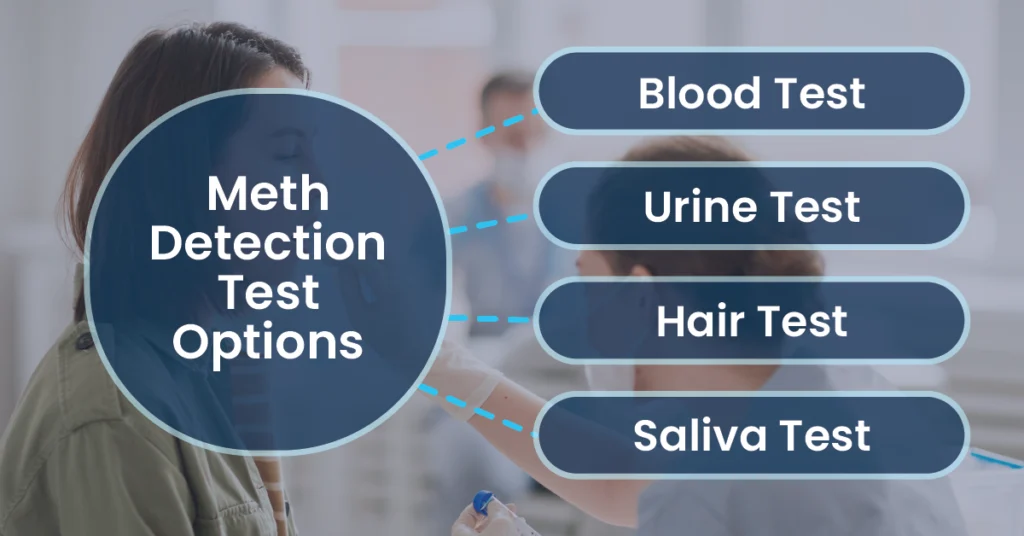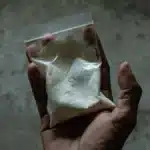Methamphetamine, usually known as meth, is a potent and highly addictive stimulant that can have severe effects on the body. After meth use, detection times vary. Keep reading to uncover the basics of methamphetamine usage, including how it enters the body, its effects, detox timeline, and detection on various tests.
Key Takeaways
The detection times after using meth can vary. Here’s what you need to know:
- The detection period for meth varies based on the type of test.
- Psychological symptoms, like anxiety and depression, may persist for weeks or months, emphasizing the need for medical supervision and ongoing support during the detox process.
- Treatment options for meth addiction include detox, rehabilitation, counseling, MAT, support groups, and aftercare for sustained recovery.
The Haven Detox-Little Rock offers a comprehensive range of effective treatment options. Call us at (501) 271-3342 for more information.
Basics of Meth Use and Abuse
Meth is a synthetic drug that evokes the central nervous system, leading to grown energy, alertness, and a sense of euphoria. The Drug Enforcement Administration (DEA) notes that illicitly manufactured meth, often called crystal meth, poses additional risks due to its impurities.
People may misuse meth by smoking, snorting, injecting, or ingesting it. The drug’s intense effects contribute to its high potential for abuse, making it a significant public health concern.
According to the National Institute on Drug Abuse (NIDA), in 2019, approximately 1.6 million people in the US reported using meth in the past year. The easy availability and low cost contribute to its widespread abuse.
How Meth Enters the System
Meth enters the body through smoking, injecting, snorting, or swallowing. Regardless of method, meth quickly reaches the bloodstream, creating intense effects on the brain’s dopamine levels.
This rapid action contributes to its addictive nature. Educational initiatives and support systems help combat meth abuse in communities across the United States.
Effect of Meth on the Body
Meth profoundly impacts the body. It speeds up the heart, raising the risk of heart problems. Appetite decreases, leading to weight loss and malnutrition. Teeth grinding and dry mouth are common. Skin issues, like sores, result from scratching due to hallucinations.
Meth damages the central nervous system, causing anxiety, paranoia, and aggression. Chronic use harms vital organs, such as the liver and kidneys. Sleep disturbances worsen over time.
Professional support and a supportive environment can help manage and overcome the harmful effects of methamphetamine use.
How Meth is Broken Down
Meth is broken down in the body through a process called metabolism. The liver plays an influential role in this breakdown. Methamphetamine undergoes chemical changes, transforming into different substances called metabolites. These metabolites are then expelled from the body through urine.
The primary enzyme involved in meth metabolism is CYP2D6, found in the liver. The rate of metabolism varies among individuals and is influenced by factors like genetics and overall health.
Regular hydration can help flush out metabolites through urine. However, it’s essential to note that complete elimination takes time, and professional guidance supports a healthier transition during the detoxification process.
Meth Detox and Withdrawal Timeline
Meth detox and withdrawal involve distinct stages, varying among individuals. Initial symptoms, like fatigue and increased appetite, occur within hours to days. Cravings intensify, contributing to mood swings and irritability.
The peak of physical symptoms, such as nausea and body aches, is usually within the first week. Psychological symptoms, like anxiety and depression, persist longer, often weeks or months. Sleep disturbances are common and may continue during this phase. Medical supervision aids in managing severe symptoms, ensuring a safer detox process.
Hydration, a balanced diet, and exercise support detox. Doctors may prescribe to ease withdrawal symptoms. The timeline differs based on factors like the duration and intensity of meth use.
Monitoring and addressing mental health during withdrawal is vital. While detox marks the initial step, ongoing treatment and support foster a sustained recovery journey.
Detecting Meth in the Body

Various tests are employed to detect methamphetamine in the body, each with its own detection window:
- Blood Test: Meth can be detected in the bloodstream for up to 1-3 days after use. Blood tests are most effective during the acute intoxication phase.
- Urine Test: Urine tests are the most common method for detecting meth. The drug can be present in urine for 3-5 days after use, but chronic users may test positive for an extended period.
- Hair Test: Methamphetamine can be seen in hair follicles for up to 90 days. Hair tests provide a longer detection window, making them convincing for identifying long-term or chronic drug use.
- Saliva Test: Saliva tests can detect meth for 1-2 days after use. While not as common as urine tests, they offer a non-invasive detection method.
A deep understanding of the diverse detection methods for methamphetamine allows for informed decisions about testing and addressing substance use concerns. Early detection is imperative to timely intervention and support on the journey toward a drug-free lifestyle.
When to Seek Treatment for Meth Use
If you or someone you know is struggling with meth use, seeking treatment is crucial. Signs that treatment may be necessary include:
- Loss of control over drug use.
- Neglect of responsibilities.
- Failed attempts to quit.
- Continuing use despite negative consequences.
Identifying the signs of methamphetamine misuse is the first step toward positive change. Remember, it’s never too late to regain control and build a healthier, substance-free future.
Treatment Options for Meth Addiction
Treatment options serve as a guide for individuals and their loved ones to steer the complexities of meth abuse and make informed decisions about seeking treatment.
- Detoxification: The first step is detox, where the body eliminates meth. It is often done under medical care to manage withdrawal symptoms.
- Inpatient Rehabilitation: Residential treatment offers a structured environment for intensive therapy and support. It typically lasts 30-90 days.
- Outpatient Treatment: Outpatient programs provide flexibility, allowing individuals to live at home while following therapy sessions and support groups.
- Counseling and Behavioral Therapy: Individual and group counseling helps control the root causes of addiction and teaches coping skills to prevent relapse.
- Medication-Assisted Treatment (MAT): Through medication-assisted treatment, experts may specify medications to help manage cravings and withdrawal symptoms.
- Support Groups: Programs like Narcotics Anonymous (NA) provide peer support and a sense of community during recovery.
- Aftercare Planning: Developing a plan for ongoing support and relapse prevention is crucial for sustained recovery.
Please remember that seeking help should be considered a strength. If you’re seeking effective treatment options, consider visiting The Haven Detox-Little Rock to explore the various beneficial options.
Frequently Asked Questions (FAQ)
Various factors determine how long traces of crystal meth stay in the human body. People can detect short-term effects of meth use in urine within two to three days. For long-term meth use, it may persist for up to a week. Hair follicle tests can reveal meth use for months.
Meth withdrawal can lead to positive results in drug tests, stressing the challenge of overcoming addiction. Factors influencing detection times include the frequency and duration of substance abuse.
Engaging in group therapy can aid in breaking the cycle of addiction. Regular testing helps monitor progress, ensuring a negative drug test over time.
The duration meth stays in someone’s system varies based on factors like frequency of use, individual metabolism, and the type of meth used, such as crystal meth.
Methamphetamine has a short half-life, and people can detect traces in urine samples for one to four days after the last use. Professional help, including medical professionals and treatment programs, is essential for those facing substance use disorders.
Withdrawal symptoms may occur, and physical activity can influence the length of time meth remains detectable. It’s crucial to understand these factors for accurate drug tests and to address the effects of meth on both short-term and long-term health.
The Haven Detox-Little Rock: Recovery Starts Here
At The Haven Detox-Little Rock, we understand the weight of addiction and the courage it takes to seek help.
Our specialized center provides customized treatment for methamphetamine addiction. We begin with a gentle detoxification process that helps eliminate harmful substances from your body. Our residential programs offer a supportive environment for intensive therapy. We also employ IV therapy to ensure a holistic approach to recovery. We strive to guide you every step of the way with our unwavering commitment and support. Call us at (501) 271-3342 and step closer to the life you deserve.




